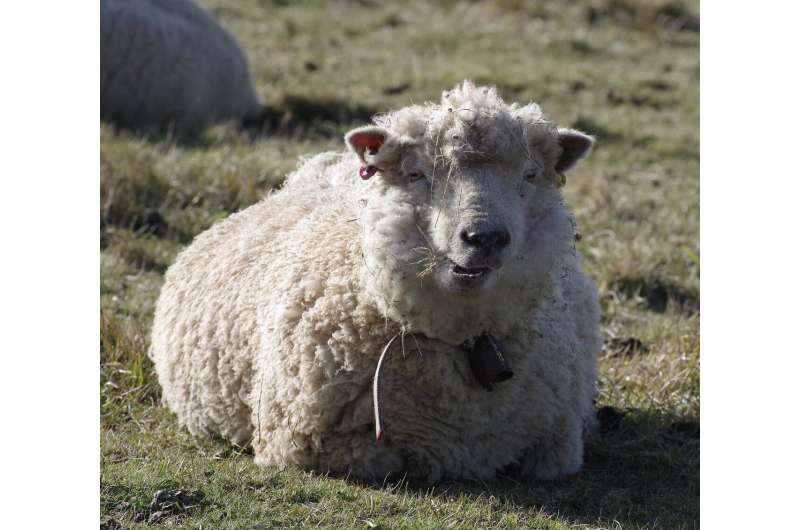Study finds barber pole worm developing resistance to common treatments

A roundworm that plagues sheep grazing irrigated pastures has been found to be resistant to common classes of dewormers, according to a recently published report online in the Sheep & Goat Research Journal.
University of Wyoming Extension sheep specialist Whit Stewart says research by him and scientists at Montana State University and the University of Georgia that began in 2017 is a baseline resistance study for the warm season barber pole worm (Haemonchus contortus) and associated deworming management practices across sheep flocks in the region.
The worm has a stripe that winds around it like a barber's pole.
"To our knowledge, it is the first published estimate of barber pole worm resistance in the Intermountain West," Stewart says. "We basically found that we are seeing the barber pole worm being resistant to our common classes of dewormers on flocks grazing irrigated acres in the region."
Moxidectin is the one dewormer drug class still highly effective for the barber pole worm, he says.
The barber pole worm causes sheep to become anemic, decreases growth performance and can cause death.
The worm is active in flocks that graze irrigated pastures in summer.
"I don't want to give the impression this is an issue for range flocks that graze across vast landscapes," Stewart says. "We have an increasing proportion of small flocks that graze irrigated pastures. This internal parasite needs water and lush grass to be ingested."
The blood-feeding organism resides in the digestive system, and the worms are deposited in feces. The fecal pellet dissolves, and the nematodes crawl up stems of grass. Sheep consume the parasite to continue the worm's life cycle.
"Results indicate we do have resistance to some common products used in our area," Stewart says. "If producers have an internal parasite burden in their flocks, it's important to use the dewormer that's still effective in their flock. The whole thrust of this is helping producers identify what works."
Collecting fecal samples and sending them to the Wyoming State Veterinary Laboratory for testing by parasitologist Berit Bangoura is the most important tool to use, he says.
At 50 cents to $1 a dose, producers don't want to treat sheep that don't need treatment, he says. Specific animals or samples combined from a group can be taken and tested.
"Generally speaking, it's not feasible if you have a large flock to sample individual sheep. A good rule of thumb is to take 10 percent of the flock or sample the flock combined into one sample," he says. "Producers receive the results, and they always have access to guidance from Berit at the Wyoming State Veterinary Laboratory and myself to implement an integrated parasite management plan."
Deworming, pasture rotation and horse grazing are options. Horses are a dead end for the barber pole worm, he says.
"A good research program assesses the needs of producers in the field, and our research assumptions have to be guided by what is happening in the field, not only theoretical, but based on what people are doing," Stewart says. "That's the cool, unique aspect of what we do in a land-grant system."
More information: Sheep & Goat Research Journal, March 2021. www.omagdigital.com/publication/?i=694410
Provided by University of Wyoming


















